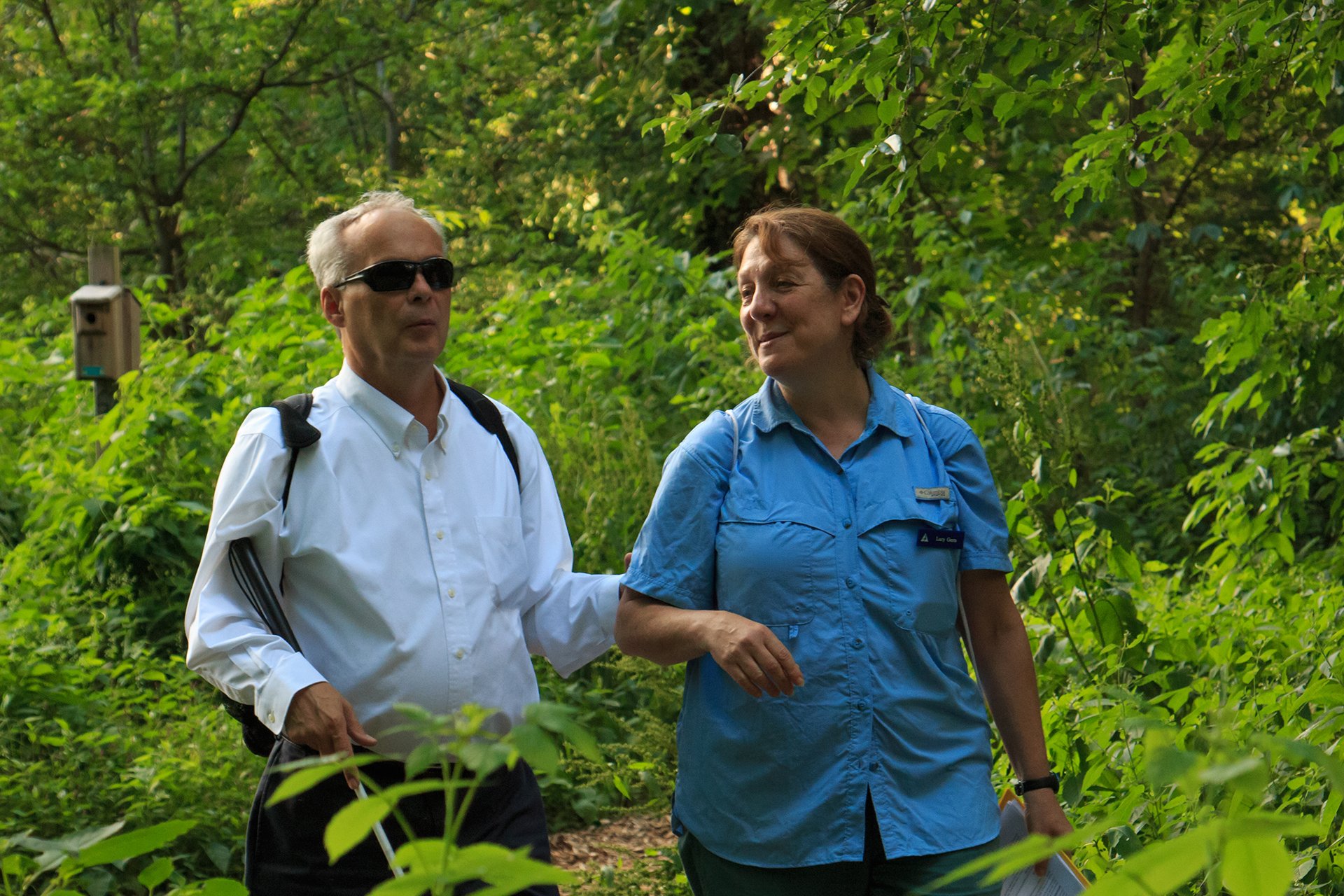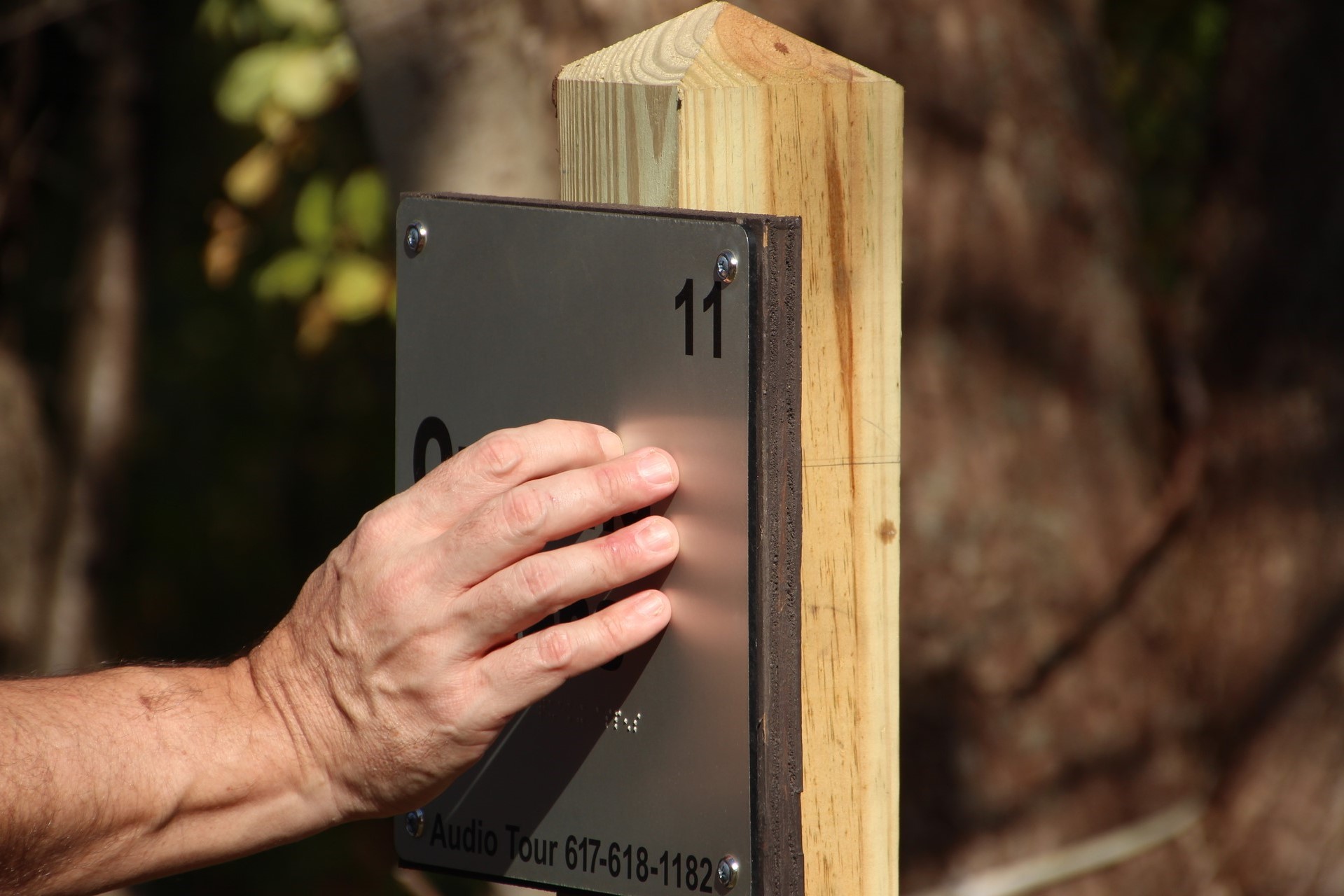In Your Words: Jerry Berrier
June 27, 2023
I have been totally blind from birth, so my introduction to birding was not with sight, but with sound. I became interested in birding by ear when my college biology professor suggested that I learn some bird sounds in lieu of the lab portion of a course I was taking. I borrowed his Cornell University record albums to study. During the final exam at the end of the semester, he took me for a walk in the woods and asked me to identify the bird sounds we heard; I passed the test. That was in 1973, and I have been birding by ear ever since.
Navigating without sight requires full concentration, whether on a city street, inside a building, or on a wooded path, which is why properly constructed All Person Trails are so important. For the last 10 years, I have been an accessibility consultant for Mass Audubon, and I have assisted in designing more than a dozen All Persons Trails that make nature exploration safer and more enjoyable for everyone.
When I walk a rope-guided trail, I am free to relax and enjoy the beauty of nature in my own unique way. I love the smells, the sounds, and the feeling of peace I experience when I am close to nature.
Several years ago, I visited the Blue Hills Trailside Museum in Milton, along with my son and my seven year-old grandson, Devyn. During the design phase of this sanctuary’s All Persons Trail, I checked all of the braille signs for accuracy and became familiar with the other accessibility features there. Devyn was so impressed with the braille signage that he excitedly dragged me to every one and asked me to read them— there were more than 30! The strong message he got from those signs was that somebody really wanted to make sure I could enjoy my visit there. I will never forget that, and I don’t think he will, either.




